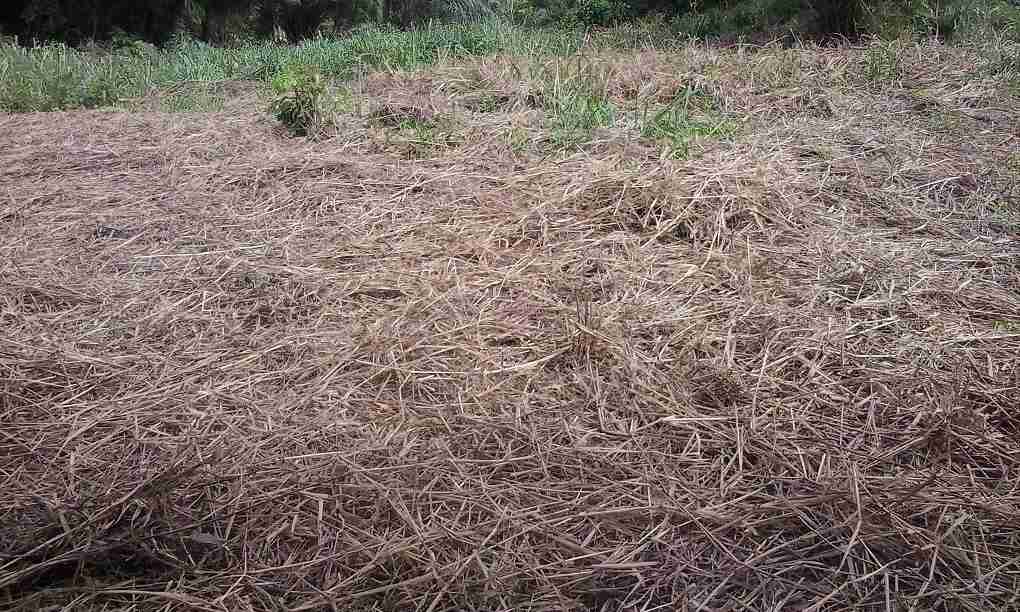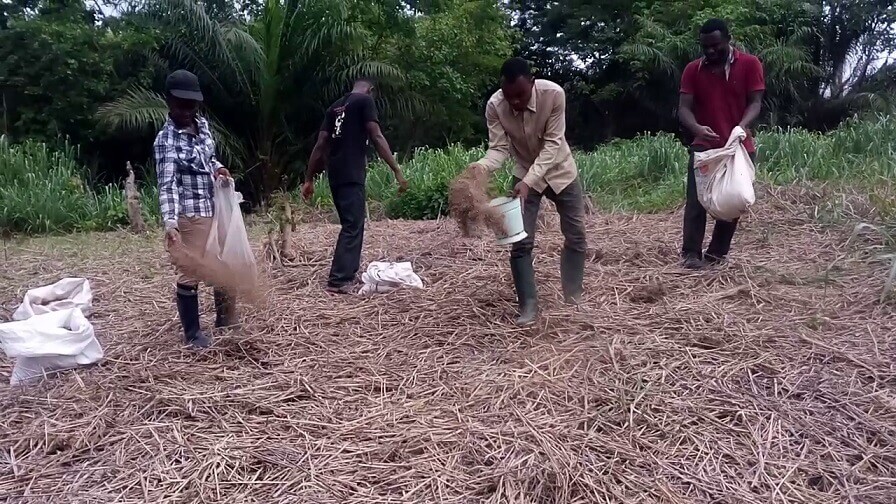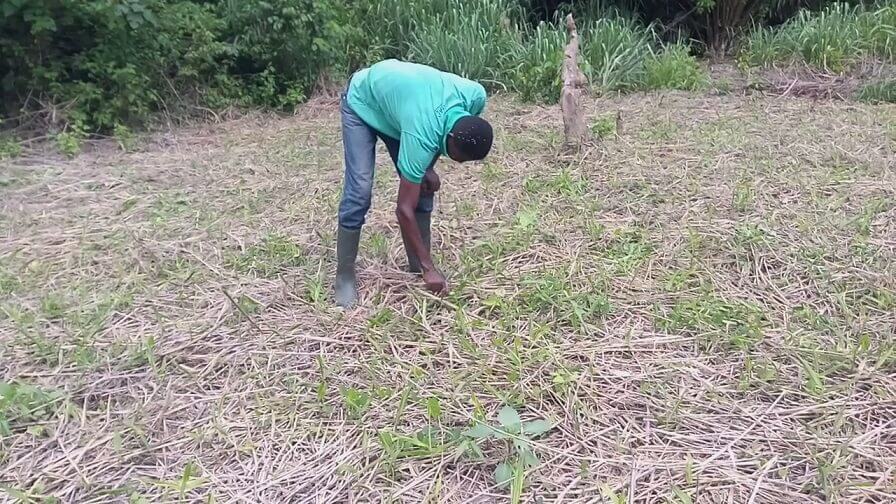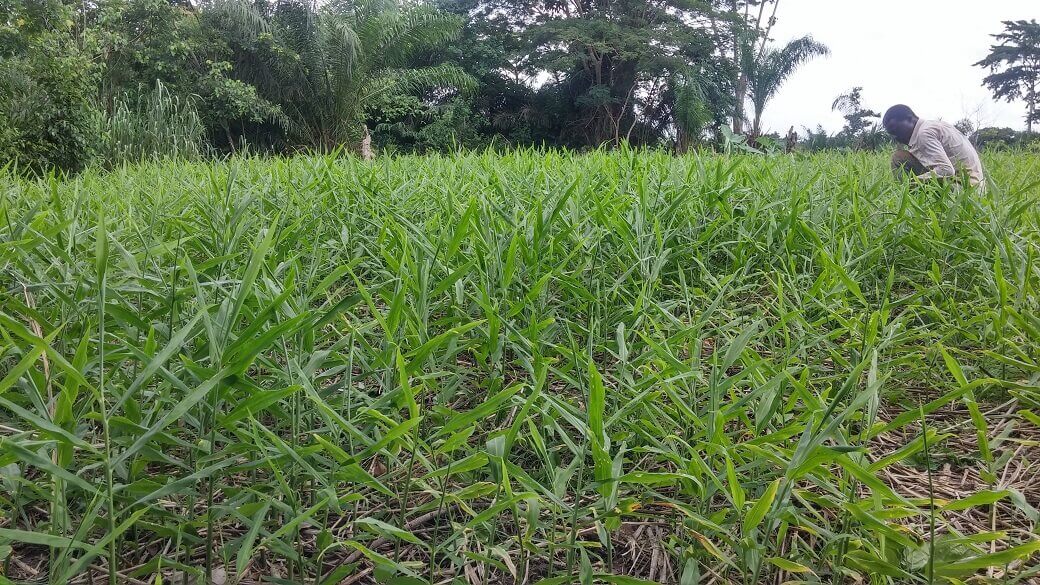Ginger production is common to farmers in a number of regions of Ghana producing several tons annually. In recent years farms are getting ting reducing yields. There is reducing the productivity of their farmlands due to continuous planting. Also the use of unsustainable practices like “slash and burn” and ploughing.
This is how effective growing ginger under no-till (Conservation Agriculture) is mitigating the challenges posed by the current climate change. The technology also reduces the cost of production whiles increasing yield and improving soil structure.
The Center for No-till Agriculture (CNTA) – Amanchia has, over the years, been educating farmers on “no-till” (Conservation Agriculture).
This covers activities on and related to the growing of ginger under no-till (Conservation Agriculture) with pictures.
Site preparation
Unlike the usual practice of “Slash and burn”, the site is cleared leaving the residue on the field. This serves as mulch, and decay to improve the soil. We remove stumps after clearing to prevent regrowth and create more space for the planting of ginger.

Ginger planting material preparation
Getting ginger ready for planting requires that, we cut into reasonably smaller sizes. The size and treatment of the materials depend on a number of factors. We advise, for first-timers, to acquire materials from credible producers of the materials.

Planting of ginger under no-till
We plant right after the planting material preparation through the thick mulch. The video shows exactly how ginger is planted through the thick mulch.

Extending mulch cover
We make sure that areas of the field that are exposed due to movements during planting are covered with mulch.
Sprouting of ginger

Ginger starts sprouting and appears above the soil after 14 days, sometimes earlier if the conditions are right.
The picture is a close shot of one of the early sprouting ginger with dug-around-base to show root development.
Ginger field at 21 days
About 85% of the ginger planted sprouts at 21 days of planting. This is due to the conserved moisture by the undisturbed soil aided by the presence of vegetation residue acting as mulch.

Fertilization of ginger field.
At 28 days, we apply manure to boost crop establishment.

Manual weed control
Weed control is a very important activity in ginger production. If not given the necessary attention may cause significant yield reduction. We take time to pick out all weeds on the ginger field to make sure the growth of ginger is not impeded, especially at the young stage of the ginger.

The ginger site at 56 days (7 weeks)

Usually, ginger planted under conventional methods will have just about 10% sprouting at this stage, if conditions are not favourable.
Manual weed control at 8 weeks.
Weed control is one very key activity in ginger cultivation. We remove the weeds manually at least once every seven days after sprouting. This helps to reduce competition for sunlight, water and soil nutrients between ginger and weeds.

Weed control is the main activity after planting. We carry that out every month. The frequency and intensity of weeding reduce with time.
Harvesting, Cleaning and Bagging
Yield after harvest was 12bags * 50kg from 2bags planted on the 0.15acre piece of land. This is after reducing the cost of production by nearly 60%.
The ginger is cleaned after harvest. Cleaning involves removing the roots and excess soil from the rhizomes. After this activity, the ginger is bagged into standard sacks.
We recommend you choose an appropriate site for your ginger farms and practice no-till.


